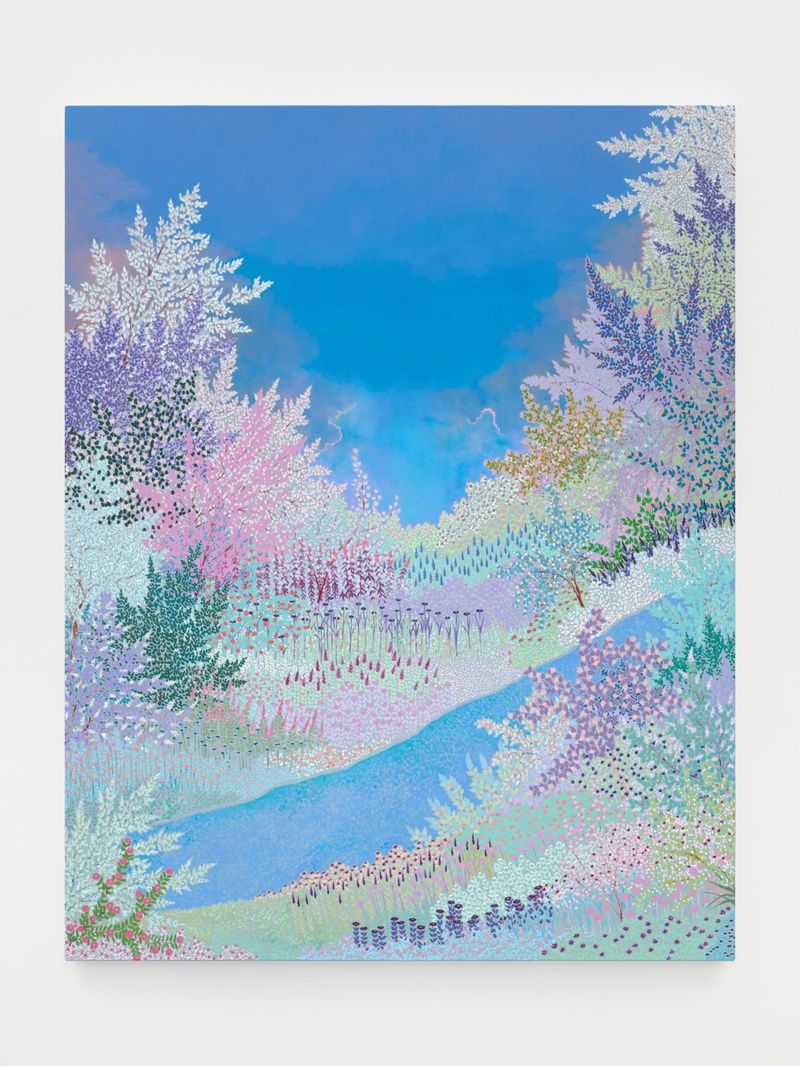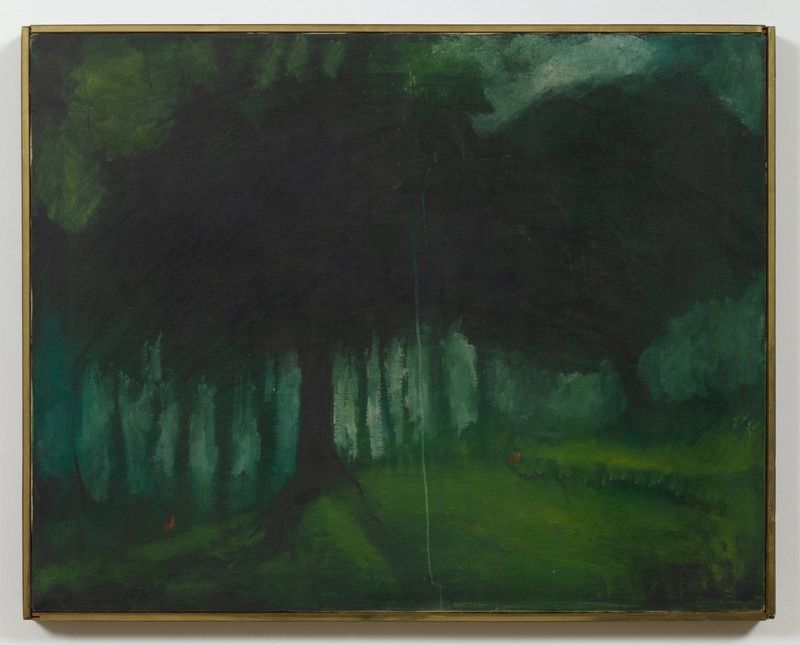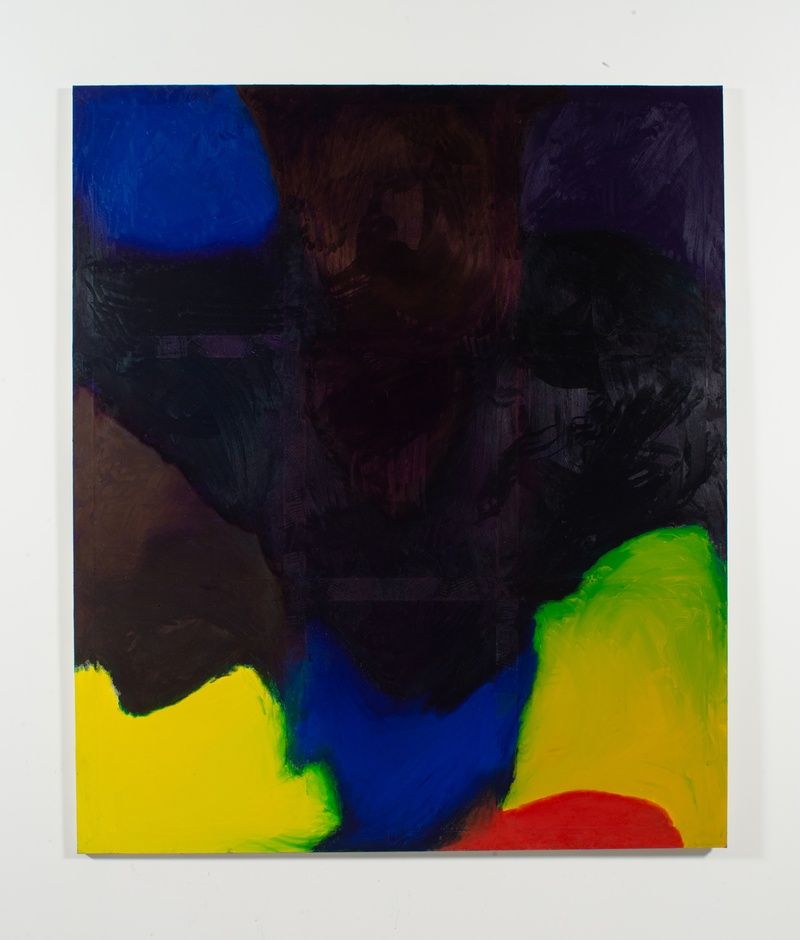James Fuentes Gallery
TURN
James Fuentes is pleased to present a group exhibition presenting carved sculpture, abstract and landscape painting, works composed from found objects and industrial materials, as well as those realized through score-based processes. Drawing together artists at the center of the gallery’s community and longer exhibition history, this project returns up-close to the fundamentally tactile nature of art in seeking to reflect upon the physical forms and forces of life as we experience it in today’s strange world.
While many works in the exhibition evade the figurative image, most do lean on recognizable elements of daily life—whether rendered abstract, reconfigured for new uses, or performing apparent inversions in their material properties. In Alison Knowles’ *Found Gloves* In Line (2018), we encounter a near-perfect meeting of the three. As a key figure in the development of experimental art from the 1960s to today, and a founding member of the Fluxus group, Knowles’ use of commonplace materials, chance operations, and participatory formats blur the boundaries between art and everyday life. This sculpture in particular follows from her larger Event Threads series, initiated in 2006, composing a visual poem of found objects strung together to create a literally suspended, tactile timeline.
We might approach such art as a kind of anthropology stripped back. In fact, formerly an anthropologist, Richard Nonas began his sculptural practice in the early 1970s; seeking out art as a place to engage human experience in relation to the spaces and forms we encounter. Deeply rooted in a minimalist aesthetic, Nonas’ sculptures often consist of raw materials like metal, stone, and wood arranged in configurations that evoke a sense of ritual and history, as if we have stumbled across a mark of human presence past—and, in truth, we have. By contrast, Carol Bove recontextualizes such minimalist aesthetics through her innovative manipulation of industrial materials like steel. Recipe (2021) is exemplary of her “collage sculptures" in which she transforms steel into seemingly fluid, abstract forms that belie the material’s associations with hardness and rigidity.
From a contemporary perspective, Ian Swordy approaches the raw material of marble for the physical and philosophical dimensions that emerge through the process of direct carving. Wherein the work’s final form is found directly in-process rather than planned out, Swordy transposes a sense of physical performance onto the medium's permanence, positing new odes within an ancient lineage, as in Venus with Wings (2025). For Lonnie Holley, as both a visual artist and musician, the act of carving is inherently tied to performance in ways that draw upon personal memory and spiritual symbolism. Using discarded materials and rooted in the traditions of assemblage and found-object art, Holley’s sculptural practice emerged in the late 1970s. His sandstone sculptures mark this early period of his career, when he salvaged material from a Birmingham tombstone company to carve works that evoke burial and rebirth in homage to ancestral memory; asserting a creative presence in the face of erasure.
Jessica Dickinson meditates on impermanence and material memory through a painting practice steeped in process. Making only around four paintings each year, her surfaces are built up, scraped back, and repaired over long periods of time. Through this method, And-Hold (2023-2024) bears accumulated marks, subtle tonal shifts, and architectural scarring that poses a direct physical record of time’s slow passage. Jonathan Allmaier’s work, too, is grounded in a process-oriented approach that emphasizes the material properties of painting. Grinding his own pigments, constructing the stretcher, and preparing the canvas, Allmaier’s painting process begins before the act of painting itself. With an interest in the “subjecthood” of a painting, he allows these elements—pigment, scale, stretcher, and canvas—to guide the creation of his abstract compositions. In his words: “it is better for the paintings and for us if the paintings make themselves.”
Engaging the materiality of painting with highly textured, impressionistic surfaces, Keegan Monaghan looks to the image itself as something elemental. While his earlier works focused on tightly cropped views of everyday objects and architectural details such as such as vents and windows, Monaghan’s newer IN 7 (2024) uses the same methods of obfuscation while pushing the image past recognizability into ambiguous, often disorienting perspectives.
John McAllister’s phosphorescent, illuminated landscape paintings observe the strangeness of nature and its cycles. rapt haven held (2025) gently contrasts the singular course of a human life with the perennial cycles of the environment, seeming to depict a ceaseless “in between” that could be read equally as dawn, dusk, daylight, or night. In this work, the sky’s clouds glow gently with a kind of heavenly light, contemplative humanity’s relationship with nature in a modern homage to early 20th-century aesthetics. The only other legible “image” in the exhibition is also a landscape, Geoffrey Holder’s Untitled (c. late 1970s). Although better known for his portraiture, Holder’s landscape paintings reflect the origins of his polymathic practice as an artist and theatre performer, through his deep connection to the natural world and his early life in Trinidad and Tobago. These compositions depict lush, tropical environments rendered with a theatrical sense of atmosphere. Much like the imagined subjects of his portraits, Holder’s landscapes reach for emotional resonance over strict realism, blending personal mythologies with an almost stage-like presentation of nature.
Also emerging from a background in theatre, Kikuo Saito translates the spatial and temporal dynamics of stage performance into a distinctly abstract visual language. Composed of broad fields of color punctuated by calligraphic marks, glyph-like forms, or gestural brushstrokes, Saito evokes movement and narrative without literal depiction. Arriving to New York from Japan at the age of 26 and eventually abandoning theater entirely for painting, Saito’s works contain a sense of dual existence and flux, where emotion and rhythm unfold visually rather than verbally. A peer of Saito in 1970s New York, Pat Lipsky also advanced Lyrical Abstraction and Color Field painting in works that seem to contain hidden gestural codes. Although her surfaces vibrate with energy, they also carry an undercurrent of deliberation and control in which color itself is a force that gathers momentum across the canvas. It’s as if Lipsky were in conversation with each color, coaxing it to reveal more of itself through subtle and confident tonal shifts and in relation to its neighbors. And, placed into new conversations here in physical space, each work forms into a single pulse, reverberating the world like a signal.
PRESS RELEASE
Works

John McAllister
rapt haven held, 2025
Oil on canvas
60 × 47 inches
(JMcA 11382)

Diamond Stingily
Hergott Dolls, 2016
Cotton, thread
3 parts, overall: 10 × 30 × 1 inches
(Dst_2)

Geoffrey Holder
Untitled, c. late 1970s
Oil on canvas
22 ¼ × 28 inches
22 ½ × 28 3/4 inches (framed)
(GH 0101)

Jonathan Allmaier
The Bear, 2018
Signed, dated and titled on verso
Oil on canvas
Pointing painting
93 ¼ × 79 1/8 × 1 inches
Unique
(JAl 9683)